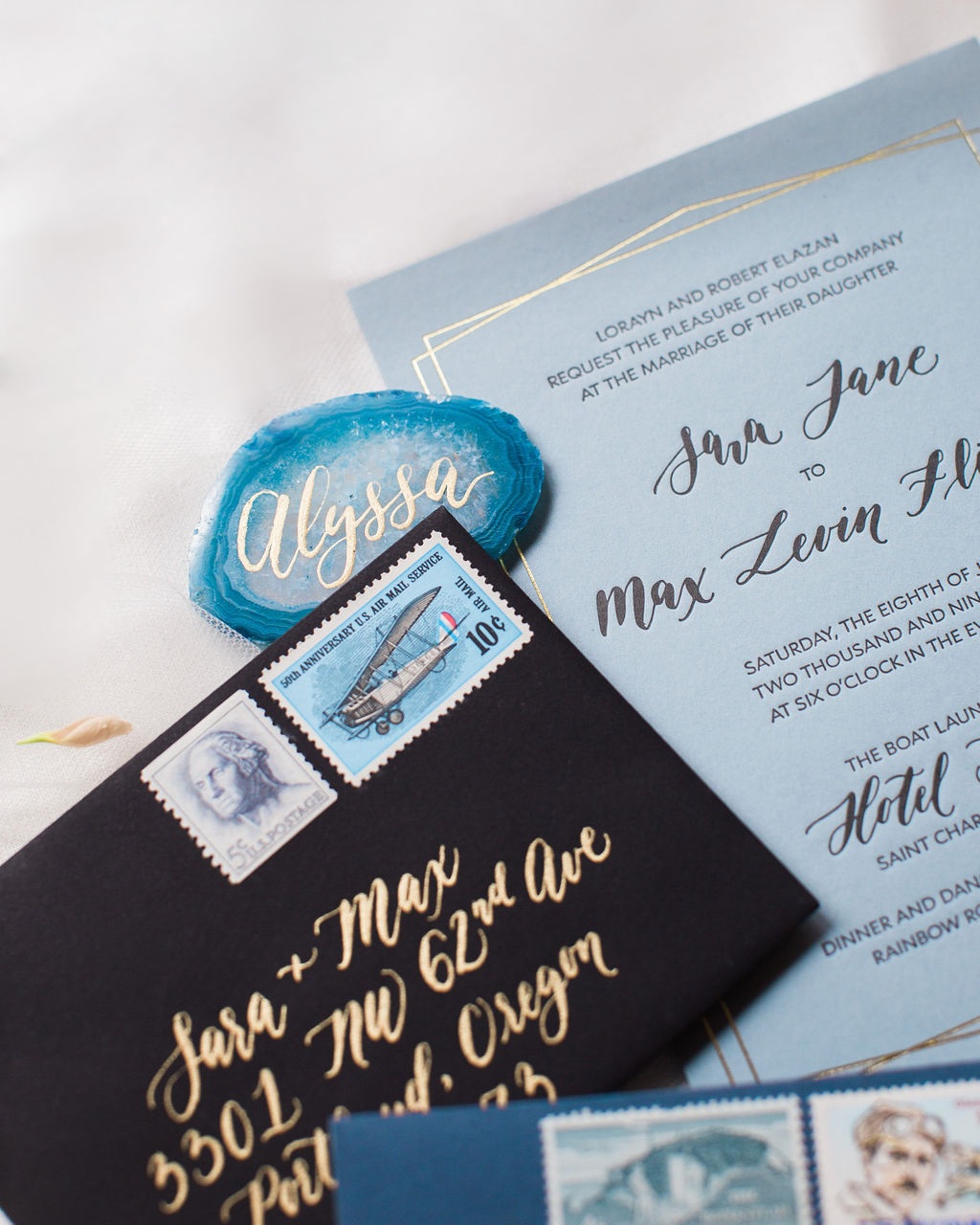Want to skip the bulk of this post and get right to our free download of a pros and cons list for printing techniques? Click here!
Alright, so you are at the point in your wedding planning where you are starting to think about the paper goods... the list can seem to go on and on:
Save the dates
Invitations
RSVP cards
Detail cards
Map cards
Rehearsal dinner invitations
Envelopes
Escort cards
Place cards
Menus
Programs....
Do you see what I am saying?! It can be a little exhausting! But that is why there are calligraphers like me who work with brides to help them catch a vision for their wedding day and make it a reality.
Now take in the thought of all these things that you could need for your wedding day and add in all of the different ways you can have them printed! In the following sections, I am going to break down what the different printing processes are, how they are done, and give examples of what that printing could look like for your wedding stationery!
The processes are listed from most expensive printing technique to least expensive printing technique.
What is foil-stamped printing?
This type of printing leads to a gorgeous, metallic shine on everything it touches! Your wedding invitation designer will take your invitation design and have it etched into a copper plate which is run over foil (which is typically gold, silver, copper, or rose gold but can really be any color you dream up!) and heated. Then the plate is pressed onto your invitation paper and viola! Shiny, gorgeous wedding invitations. This is the most expensive way to have your invitations printed but one way to cut down on cost is to have a small portion of your invitation foil printed (such as just having your names printed in foil) rather than the entire suite.
What is letterpress printing?
This printing technique was invented in the mid-15th century and naturally adds a classic, elegant feel to wedding invitations, especially when printing on thick, cotton paper. This is my personal favorite type of printing and I hope to own a letterpress machine someday (but that is out of the question now as they typically weigh over a ton)) Anyway, besides it being my favorite type of printing it is important to note that if you have your invitations letter-pressed you are limited in the area of color. You can add as many colors you want but as you add colors the price will go up because this require more plates to be added.
An example of letterpress printing on Silk and Willow handmade paper from a custom project - inquire here for pricing on custom invitations.
What is screen-printing?
For this technique your wedding invitation design is burned into a screen that is then placed over paper and ink is squeezed through the burned openings in the screen (I often tell people to picture a screen that you have in your homes window and then picture the openings being smaller and only having openings where your invitation design is...ink can then only come through those openings to be printed!) I hope that makes sense... This technique is also limited by color and a new screen is required for each color. What I love about this printing technique is that the color is extremely rich and vibrant. The samples for my semi-custom suite, Olive, are screenprinted! Also, screen-printing can be a great way to have your stationery designer address your RSVP envelopes. It is also great if you are would like your invitations to be on a dark paper (such as navy or black) as printing in white is an option.
An example of screen-printed suite that was a custom design for a Virginia couple
What is digital printing?
This technique is more common and familiar. Digital printing is similar to what you do at home or in the office when you send something to the printer. A mix of inks from your printer come together and are printed onto paper. At Golden Hour Paper we send you invitation design files to our trusted printers who use high capacity printers, thicker stock of paper, and produce the best in quality with color matching. This is the most budget-friendly form of printing and doesn't have any limitations color-wise (although digitally printing white ink can be spendy!).
How can I combine printing techniques for wedding invitations?
Using the techniques listed above together can really set your invitations apart in your guests mailbox. Foil-stamping your names in gold while digitally printing the remaining details and design can save you some $ and when you choose a color that complements the gold it can make your invitations even more gorgeous than just foil printing could! Really, anything is possible when it comes to combining printing techniques. if you have further questions please comment below or reach out for a custom quote here!
Ready for a free download of all this content in a Pros and Cons list?
Click here to receive the free download!
All the Best,
Maddy Kelly




